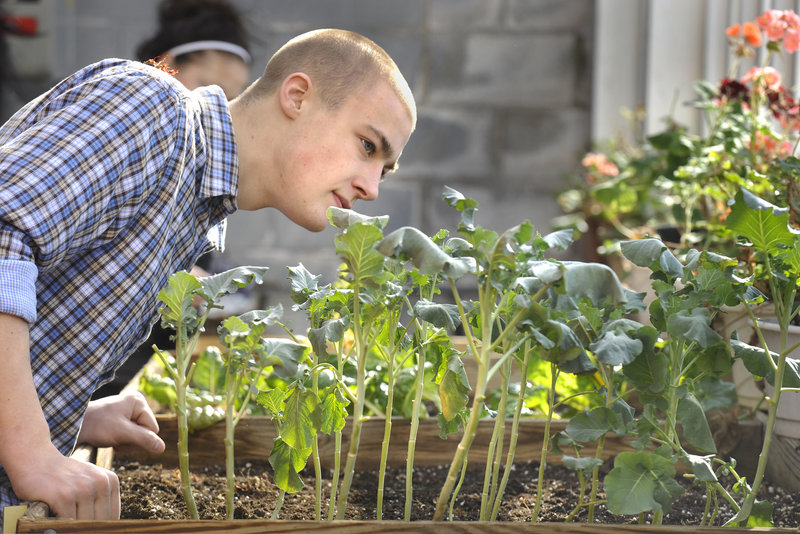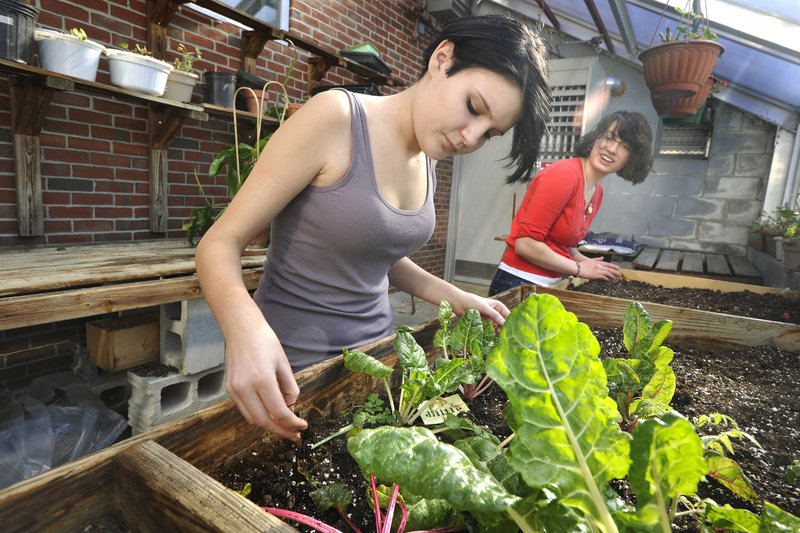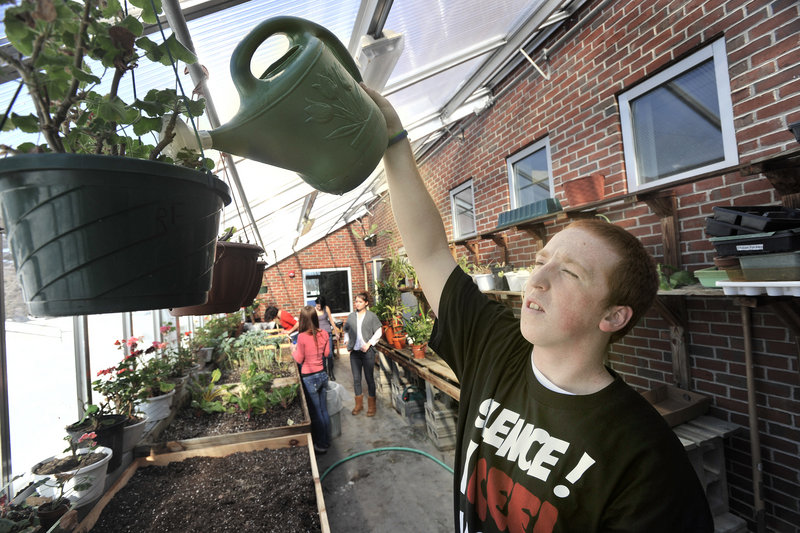SOUTH PORTLAND – A thick blanket of snow surrounded the greenhouse and covered the garden at South Portland High School, but inside, students were spinning visions of the growing season.
Planning was well under way Friday. Students browsed seed catalogs in search of the right sunflower and the hottest peppers. Others brainstormed new elements for the garden. A grapevine archway, red mulch, a birdhouse and additional raspberry canes were some of their ideas.
The greenhouse has played a big role in the ecology and applied math classes in Learning Alternatives, a program for “nontraditional learners” within the high school. A previously underused addition to the science wing, the greenhouse now serves as a lab for the classes, which have, in turn, collaborated with other classes on projects.
The greenhouse, along with the compost area and the garden, are part of an effort to bring more experiential learning into the classroom. On Friday, two seniors in the ecology class spoke well of the hands-on approach as they recounted some of the vegetables — beans, tomatoes, lettuce, squash, carrots and more — that they planted last year.
“It’s not just sitting around,” said Regan Muse.
“And you get to see the process. This class is more meaningful because you learn things you can use in life,” Abby Reny added.
Inside the greenhouse, students are still tending vegetables planted earlier. Leggy broccoli plants, diminutive bunches of swiss chard and clumps of mache cultivated by ecology students are growing in planters made by industrial arts students. Other planters that are now empty serve as reminders of the harvests brought to the cafeteria, sampled in cooking class and shared with the Ronald McDonald House in Portland.
By the back wall are houseplants that applied math students rescued from the clearance rack at Lowe’s. The students have been nursing them back to health and selling them. They have donated the revenue to Camp Sunshine, the camp in Casco for children with life-threatening illnesses and their families.
Tania Ferrante, the ecology and applied math teacher, said plans for the future could include composting worms, a watering system and grow lights. That last item caught the attention of Giselle Muse, a sophomore who is not related to her classmate, Regan.
“I would like to see these plants shoot up — more quantity,” she said.
Ferrante and Kara Tierney-Trevor, a school social worker, have pursued grants to pay for greenhouse and garden projects. A recent $750 grant from the Communities Promoting Health Coalition will pay for soil, seed and other supplies. The plan is to use $500 from the Portland Land Trust to help make the garden a welcoming space for the entire school.
Alida Payson of Cultivating Community, a Portland-based nonprofit, talked to the class about designing the garden. A specialist will talk to them next week and show them examples of other school gardens. The students will develop a plan over the next couple of weeks to present to the school administration.
The group talked about possibilities like stumps and hay bales for seating. They laughed a bit as they imagined some classes meeting there.
Staff Writer Ann S. Kim can be contacted at 791-6383 or at: akim@pressherald.com
Send questions/comments to the editors.




